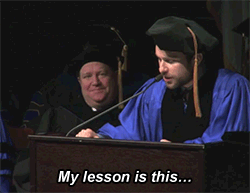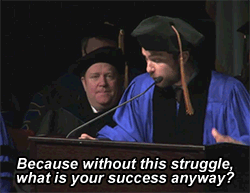:)
:)










More Posts from Smparticle2 and Others
Mathematical processes in the brain influenced by language
People can intuitively recognise small numbers up to four, however when calculating they are dependent on the assistance of language. In this respect, the fascinating research question ensues: how do multilingual people solve arithmetical tasks presented to them in different languages of which they have a very good command? This situation is the rule for students with Luxembourgish as their mother tongue, who were first educated in German and then attended further schooling in French as teaching language.

This question was investigated by a research team led by Dr Amandine Van Rinsveld and Professor Christine Schiltz from the Cognitive Science and Assessment Institute (COSA) at the University of Luxembourg. For the purpose of the study, the researchers recruited subjects with Luxembourgish as their mother tongue, who successfully completed their schooling in the Grand Duchy of Luxembourg and continued their academic studies in francophone universities in Belgium. Thus, the study subjects mastered both the German and French languages perfectly. As Luxembourger students, they took maths classes in primary schools in German and then in secondary schools in French.
In two separate test situations, the study participants had to solve very simple and a bit more complex addition tasks, both in German and French. In the tests, it became evident that the subjects were able to solve simple addition tasks equally well in both languages. However, for complex addition in French, they required more time than with an identical task in German. Moreover, they made more errors when attempting to solve tasks in French.
The bilingual brain calculates differently depending on the language used
During the tests, functional magnetic resonance imaging (fMRI) was used to measure the brain activity of the subjects. This demonstrated that, depending on the language used, different brain regions were activated.
With addition tasks in German, a small speech region in the left temporal lobe was activated. When solving complex calculatory tasks in French, additional parts of the subjects’ brains responsible for processing visual information, were involved. During the complex calculations in French, the subjects additionally fell back on figurative thinking. The experiments do not provide any evidence that the subjects translated the tasks they were confronted with from French into German, in order to solve the problem.
While the test subjects were able to solve German tasks on the basis of the classic, familiar numerical-verbal brain areas, this system proved not to be sufficiently viable in the second language of instruction, in this case French. To solve the arithmetic tasks in French, the test subjects had to systematically fall back on other thought processes, not observed so far in monolingual persons.
The study documents for the first time, with the help of brain activity measurements and imaging techniques, the demonstrable cognitive “extra effort” required for solving arithmetic tasks in the second language of instruction. The research results clearly show that calculatory processes are directly affected by language.
For the Luxembourg school system, these findings are somewhat groundbreaking, given the well-known fact that, upon moving from primary school to secondary school, the language of instruction for math changes from the primary teaching language (German) to the secondary teaching language (French). This is compounded by the fact that a much smaller proportion of today’s student population in the Grand Duchy has a German-speaking background compared to previous generations, and it can be assumed that they already have to perform visual translation tasks in German-speaking math classes in primary school.










Never be afraid to fail.
Watch all of ‘It’s Always Sunny in Philadelphia’s" Charlie Day’s inspiring commencement speech here.

Rabies Viruses Reveal Wiring in Transparent Brains
Scientists under the leadership of the University of Bonn have harnessed rabies viruses for assessing the connectivity of nerve cell transplants. Coupled with a green fluorescent protein, the viruses show where replacement cells engrafted into mouse brains have connected to the host neural network.
The research is in Nature Communications. (full open access)


David Silverman @tubatron
1st appearance of Milhouse in 1st Butterfinger storyboard 11/18/1988 (missed the anni thing by a few weeks – )

Untitled
by: Jannik Obenhoff

Hold a buoyant sphere like a ping pong ball underwater and let it go, and you’ll find that the ball pops up out of the water. Intuitively, you would think that letting the ball go from a lower depth would make it pop up higher – after all, it has a greater distance to accelerate over, right? But it turns out that the highest jumps comes from balls that rise the shortest distance. When released at greater depths, the buoyant sphere follows a path that swerves from side to side. This oscillating path is the result of vortices being shed off the ball, first on one side and then the other. (Image and research credit: T. Truscott et al.)







How to Beam ➝ Noemi Makra Style

How do you build a metal nanoparticle?
Novel theory explains how metal nanoparticles form
Although scientists have for decades been able to synthesize nanoparticles in the lab, the process is mostly trial and error, and how the formation actually takes place is obscure. However, a study recently published in Nature Communications by chemical engineers at the University of Pittsburgh’s Swanson School of Engineering explains how metal nanoparticles form.
“Thermodynamic Stability of Ligand-Protected Metal Nanoclusters” (DOI: 10.1038/ncomms15988) was co-authored by Giannis Mpourmpakis, assistant professor of chemical and petroleum engineering, and PhD candidate Michael G. Taylor. The research, completed in Mpourmpakis’ Computer-Aided Nano and Energy Lab (C.A.N.E.LA.), is funded through a National Science Foundation CAREER award and bridges previous research focused on designing nanoparticles for catalytic applications.
“Even though there is extensive research into metal nanoparticle synthesis, there really isn’t a rational explanation why a nanoparticle is formed,” Dr. Mpourmpakis said. “We wanted to investigate not just the catalytic applications of nanoparticles, but to make a step further and understand nanoparticle stability and formation. This new thermodynamic stability theory explains why ligand-protected metal nanoclusters are stabilized at specific sizes.”
Read more.

Warrior of the grassland - Anup Deodhar - The Comedy Wildlife.
-
 kenmaismyspiritanimal liked this · 7 months ago
kenmaismyspiritanimal liked this · 7 months ago -
 eamlav liked this · 3 years ago
eamlav liked this · 3 years ago -
 gooberino reblogged this · 4 years ago
gooberino reblogged this · 4 years ago -
 fruit-caught-on-camera liked this · 4 years ago
fruit-caught-on-camera liked this · 4 years ago -
 vienrosea liked this · 4 years ago
vienrosea liked this · 4 years ago -
 castlewyvern liked this · 5 years ago
castlewyvern liked this · 5 years ago -
 wintervision liked this · 5 years ago
wintervision liked this · 5 years ago -
 cronamai liked this · 5 years ago
cronamai liked this · 5 years ago -
 iamgarbo liked this · 5 years ago
iamgarbo liked this · 5 years ago -
 landruce liked this · 5 years ago
landruce liked this · 5 years ago -
 harbinger-of-rage reblogged this · 5 years ago
harbinger-of-rage reblogged this · 5 years ago -
 swimmingferret reblogged this · 5 years ago
swimmingferret reblogged this · 5 years ago -
 violeterror404 liked this · 5 years ago
violeterror404 liked this · 5 years ago -
 arsonality-archived liked this · 5 years ago
arsonality-archived liked this · 5 years ago -
 rosepoet85 reblogged this · 6 years ago
rosepoet85 reblogged this · 6 years ago -
 rosepoet85 liked this · 6 years ago
rosepoet85 liked this · 6 years ago -
 prussiannurse liked this · 7 years ago
prussiannurse liked this · 7 years ago -
 trekbaroque-san liked this · 7 years ago
trekbaroque-san liked this · 7 years ago -
 gabrielsknife liked this · 7 years ago
gabrielsknife liked this · 7 years ago -
 rosepoet85 reblogged this · 7 years ago
rosepoet85 reblogged this · 7 years ago -
 concreteclass reblogged this · 7 years ago
concreteclass reblogged this · 7 years ago -
 dinosawrrr reblogged this · 8 years ago
dinosawrrr reblogged this · 8 years ago -
 dinosawrrr liked this · 8 years ago
dinosawrrr liked this · 8 years ago -
 jmollegaard reblogged this · 8 years ago
jmollegaard reblogged this · 8 years ago -
 luncheon-aspic reblogged this · 8 years ago
luncheon-aspic reblogged this · 8 years ago -
 luncheon-aspic liked this · 8 years ago
luncheon-aspic liked this · 8 years ago -
 frangale reblogged this · 8 years ago
frangale reblogged this · 8 years ago -
 foquito-de-lux liked this · 8 years ago
foquito-de-lux liked this · 8 years ago -
 periurbana-promedio liked this · 8 years ago
periurbana-promedio liked this · 8 years ago -
 frangale liked this · 8 years ago
frangale liked this · 8 years ago -
 jampet reblogged this · 8 years ago
jampet reblogged this · 8 years ago -
 rocket-number-nine reblogged this · 8 years ago
rocket-number-nine reblogged this · 8 years ago -
 rocket-number-nine liked this · 8 years ago
rocket-number-nine liked this · 8 years ago -
 blowinellz liked this · 8 years ago
blowinellz liked this · 8 years ago -
 desmondlc reblogged this · 8 years ago
desmondlc reblogged this · 8 years ago -
 parachutegirl liked this · 8 years ago
parachutegirl liked this · 8 years ago -
 janocostes liked this · 8 years ago
janocostes liked this · 8 years ago -
 wrecksgalore liked this · 8 years ago
wrecksgalore liked this · 8 years ago -
 littleturtleduck liked this · 8 years ago
littleturtleduck liked this · 8 years ago -
 the-honey-blossom reblogged this · 8 years ago
the-honey-blossom reblogged this · 8 years ago -
 cargocultmagic liked this · 8 years ago
cargocultmagic liked this · 8 years ago -
 ensignschlo liked this · 8 years ago
ensignschlo liked this · 8 years ago -
 schuyler reblogged this · 8 years ago
schuyler reblogged this · 8 years ago -
 themaskhero liked this · 8 years ago
themaskhero liked this · 8 years ago